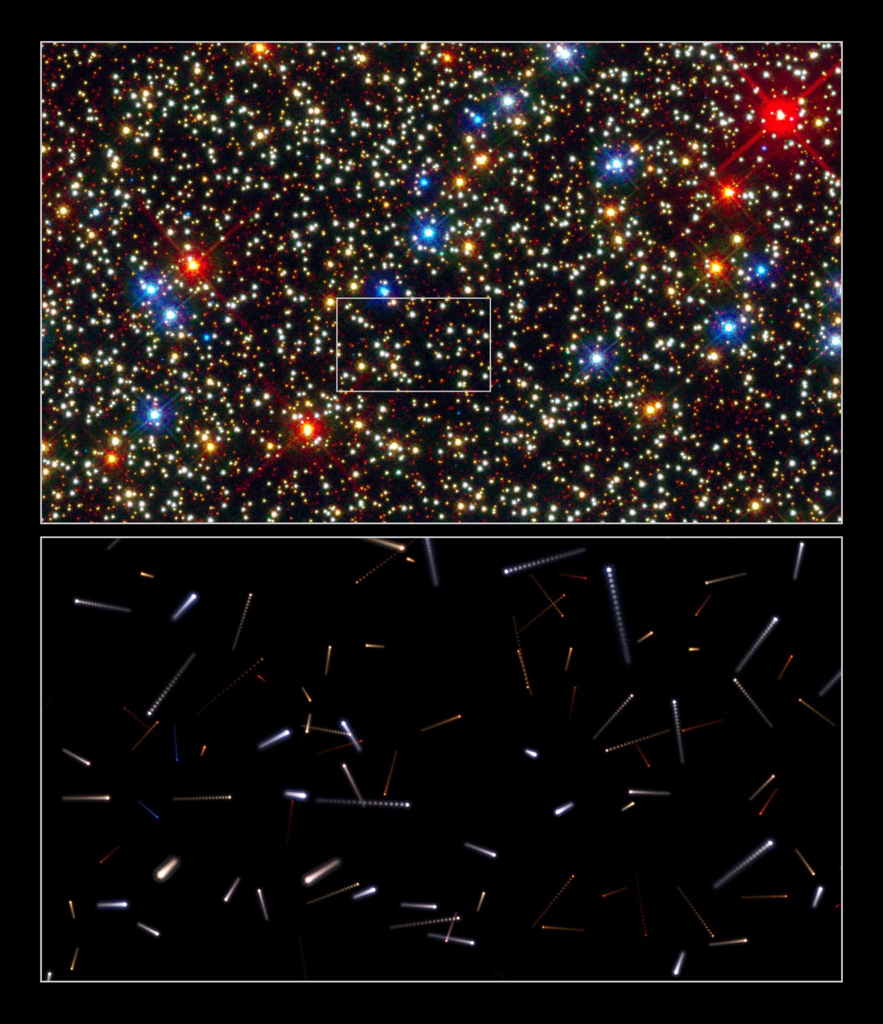A system of black holes has been discovered in the largest star cluster of the Milky Way.
Globular star clusters resemble miniature versions of galaxies — collections of gravitationally bound stars within a single spherical structure. They surround a larger galaxy and orbit it like satellites. Our Milky Way has already been found to host over one and a half hundred of these "charges."
One of these clusters has been observed since ancient times, but for many centuries it was mistaken for a star, which is why it has historically been named Omega Centauri. This object is located in the constellation of the same name, approximately 15-17 thousand light-years away from us. In comparison, the Milky Way's satellite galaxies, the Large and Small Magellanic Clouds, are about ten times farther away.
The diameter of this cluster is about 150 light-years, containing approximately 10 million stars with a total mass equivalent to four to five million Suns. The majority of these are dwarf stars. The dimensions of Omega Centauri have long led astronomers to suspect that it may not be a true globular cluster, but rather the remnant of a dwarf galaxy that was once captured by the Milky Way.
Consequently, Omega Centauri piques the greatest interest among researchers studying black holes: they are trying to identify a type they believe could theoretically exist — a black hole of intermediate mass.
Currently, two types of black holes are observed in space: the "collapsed" cores of the most massive stars (stellar mass black holes or slightly more) and supermassive black holes at the centers of galaxies, which have masses equivalent to millions or billions of Suns. For example, our central galactic black hole contains a mass of four million Suns.
Astronomers are attempting to determine whether an intermediate variant exists — a black hole with a mass, say, of tens of thousands of Suns. If such black holes do exist, they are likely to be found in globular star clusters. There have been suggestions that such a black hole is located in Omega Centauri, and signs of a source of very strong gravity are indeed observed at the center of the cluster — specifically, the "exceedingly" high velocities of certain stars.

This has sparked a debate: some researchers believe that these stars are accelerated by one large black hole of the sought-after intermediate mass, while others argue that there may simply be a collection of relatively small black holes — objects of stellar mass.
A team of astronomers from Spain, France, Switzerland, and the United Kingdom recently developed a model of what is happening within the globular cluster. In their article for Astronomy & Astrophysics (available on the Cornell University preprint server), they explained that they studied the center of Omega Centauri using a special type of star located in its vicinity — the so-called millisecond pulsars.
Recall that pulsars, or neutron stars, are the collapsed remnants of "dead" massive stars that rotate at enormous speeds and emit intense radiation. Millisecond pulsars are characterized by particularly rapid rotation, completing each rotation in mere fractions of a second. They are thought to be "spun up" by the infalling material from a captured companion star. Such stars are often found in globular clusters due to the dense environment where many stars form binary systems. According to astrophysicists, the rotational periods of these stars are almost always constant, allowing them to be used as sensitive "sensors" that can detect even the slightest changes in their vicinity.
In Omega Centauri, 18 such stars are observed. Scientists compared their "behavior" to understand how mass is distributed in the cluster's center. Researchers are leaning towards the idea that there is not one large black hole, but rather a concentrated cluster of stellar mass black holes. However, they do not completely rule out the possibility that at the very "core" there could be a particularly massive black hole, but it is far less massive than previously thought and is surrounded by a cluster of smaller black holes.